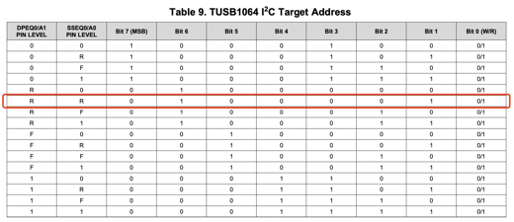Other Parts Discussed in Thread: TUSB1064, TPS65982
I'm working on a USB-C to DisplayPort design with the TUSB1064 chip and ordered the TUSB1064RNQEVM board for testing but having issues getting it to work. I've tried setting all the defaults as shown in table 1 of the eval board users guide but the board is still not outputting anything onto the display. I've tried using a few different USB C video inputs to the board including a few phones, MacBook and a PC bus still not getting anything to work. When connecting to a PC to input video into the dev board USB-C connector, the PC was able to detect it as a potential monitor but shows an error with an issues with the connected device.
Also changing the CTL1 and 0 lines to change the type of output does help with getting an output out of the DisplayPort connector.
I would appreciate some help to get this chip working and integrated into our design.
Not sure if it's a faulty board or something not set right on it.



